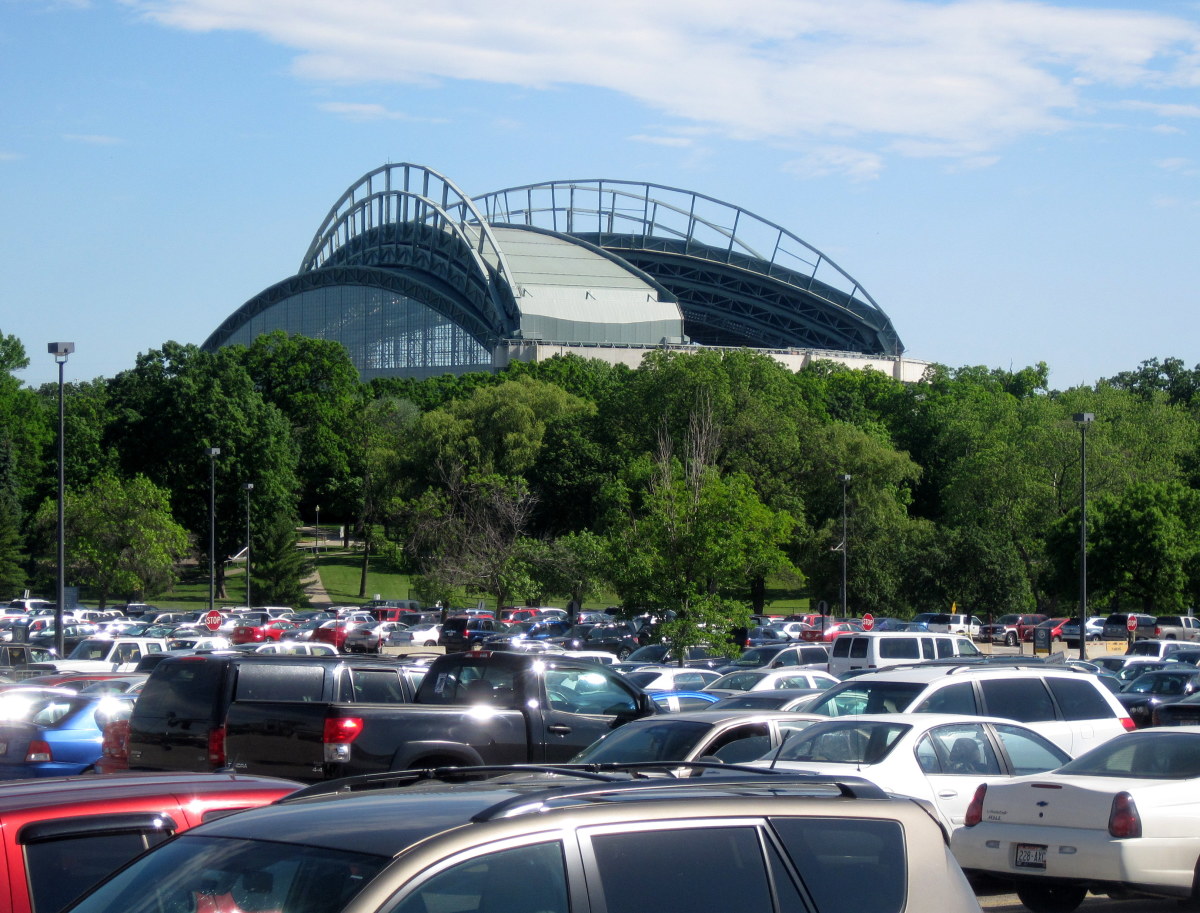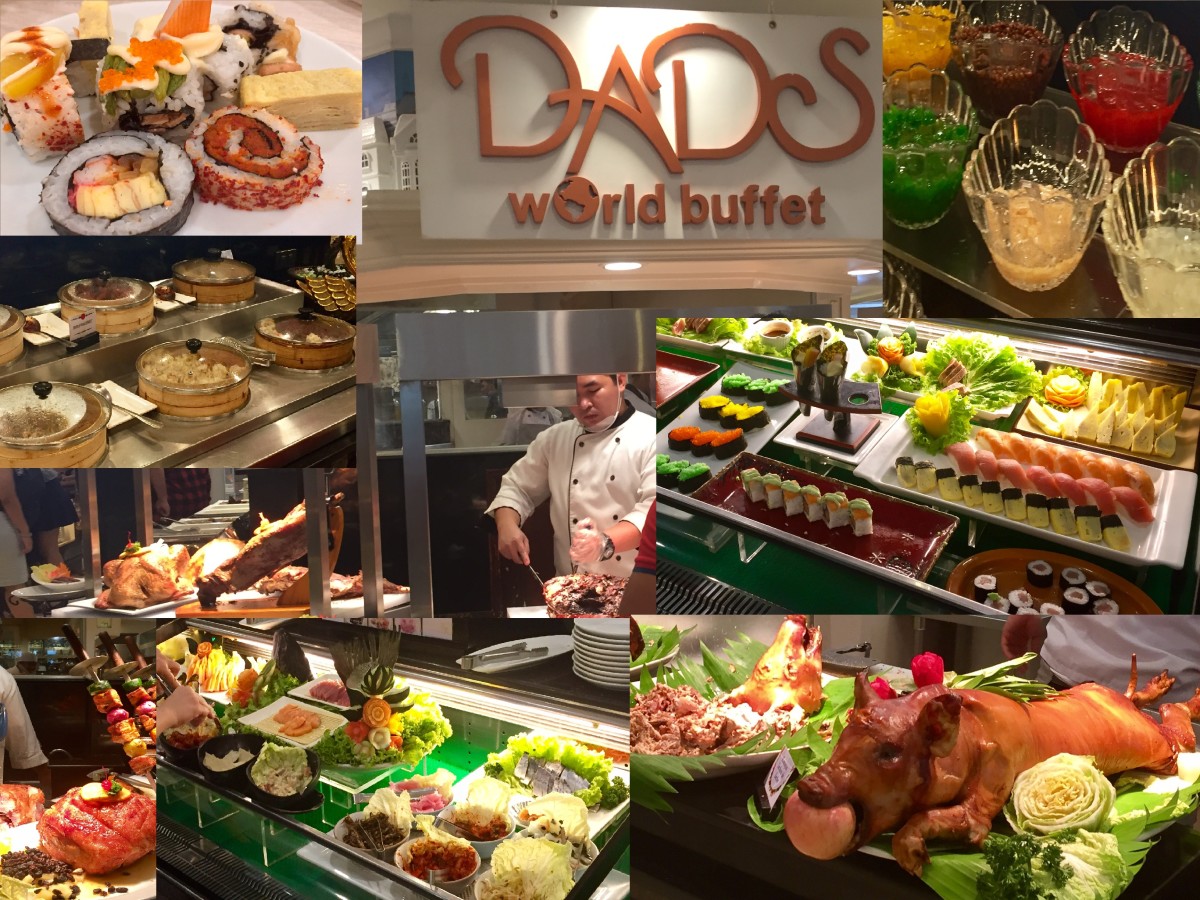Why slow food was invented in Europe and fast food in North America
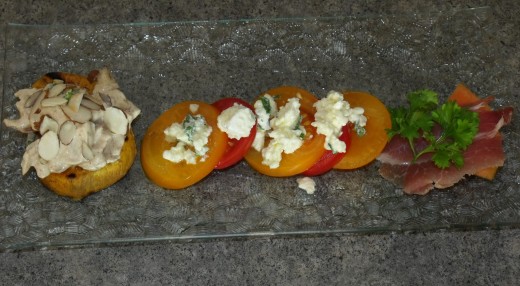
How to spot a European tourist in an North American restaurant
Although Europe and North America share similar cultures, the different restaurant etiquettes are not only continents, but worlds apart. Not being familiar with the local customs can easily confuse the average tourist and give him the feeling of being treated unfriendly or even rudely. Having been born and raised in Switzerland, my native eating etiquette is so ingrained in my brain that I will probably never get used to the North American customs, no matter how hard I try. For those of you who don’t know what I’m talking about, there is a short but down to the point explanation to the problem: EUROPEANS EAT FOOD WHILE AMERICANS GUZZLE IT!
So next time you are happily guzzling down your food see if there are any European tourists. They are easy to spot: Scared patrons hanging on to their dinnerware for dear life with an intimidated look on their face, while the frustrated waiter is circling them like a hawk.
If you don't understand what I am talking about, here is a simple scenario:
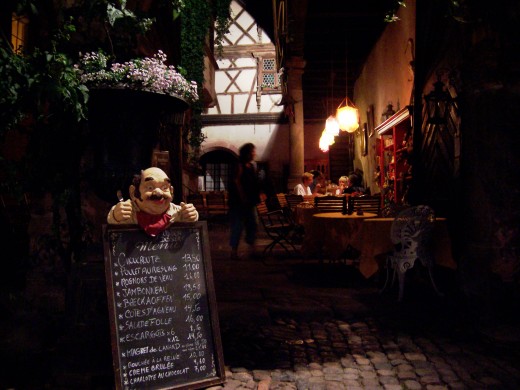
North America
A group of four people enters the restaurant. Two guests order the daily special which consists of a soup and a main course, the other two order different main courses.
After a few minutes, the waiter brings one of the main courses. The guest immediately starts eating once the plate hits the table and is already half finished when his friend’s meal arrives. Number two also starts guzzling his food, after all he is hungry from watching his buddy. When the waiter finally brings the two daily specials, number one is already finished and number two is almost done. For them it’s now time to order dessert. Since the special consists of soup and a main course, quite often both courses arrive at the same time. (In Europe, this would be totally unacceptable). So now the real guzzling begins, after all nobody likes to eat cold food. Each time the waiter comes close to the table, he quickly removes any unused utensils. If the two late eaters wish to join in the dessert orgy, they will probably wolf down all three courses in less than 30 minutes. Before they lick the last crumbs off their lips, the vulture-like waiter hastily grabs their dinnerware and presents them with the bill. After all, this is the proof that he is efficient and doing his job well and it will increase his chances of a fat tip. Within less than an hour our four friends are happily heading for home. Their tummy is full; mission accomplished.
In North America, the scenario described above is absolutely normal. In Europe however, the patrons would feel totally intimidated, the chef would be fired due to lacking time-management skills and the waiter would be considered rude and unprofessional. This restaurant would go out of business in no time.
So that you can better understand what I am getting at, I will now tell you what would happen on the other side of the Atlantic:
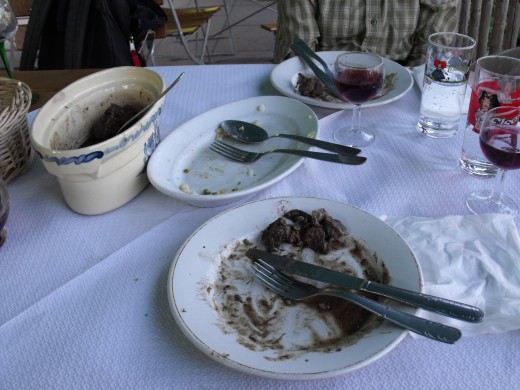
Europe
A group of four people enters the restaurant. Two guests order the daily special which consists of a soup and a main course, the other two order different main courses.
To pass the time they order an aperitif, after all this is a social gathering and not a feeding frenzy. After 20 minutes or so the waiter brings the two soups belonging to the daily special. The other two patrons who haven’t ordered a starter don’t get anything yet and patiently watch their friends eat while they are having another aperitif. Nobody is rushing. After approx. 20 – 30 minutes the waiter brings all four main courses - TOGETHER! Now the whole group is eating and once again, nobody is rushing. When they have finished eating, they put their cutlery on their plate. This is the official sign that the waiter can come and remove the dinnerware. Please take note that it is the height of rudeness to remove anything from the table until the last person has finished eating! (Now, maybe you get the hint why the unsuspecting European tourist will feel threatened by a North American waiter who stalks his dinnerware like a vulture).
While digesting the food, our four friends tackle the rest of the wine while discussing the topics of the day. This might lead to ordering another bottle of wine, after all the night is still young. Dessert is never mixed with wine, unless it’s a sweet dessert wine. So the waiter will patiently wait until the drinking is finished and the patrons are ready to order the last course, accompanied by coffee. He may “discretely” walk past a few times but not push the clients into ordering. Once again the dinnerware is only removed when the last crumb has disappeared. The patrons will usually call the waiter over when they want the bill. It is rude to bring the bill without asking the customer if he is ready. (So if a European gets his bill in an American restaurant while he is still eating, he thinks that the restaurant wants to kick him out). Our four friends leave the restaurant after several hours of socializing and enjoying food, wine and good company. The restaurant visit probably cost a fortune but who cares, after all this was the evening’s entertainment. Money well spent, nobody is rushing home.
Now while the European patrons are totally happy, the average American tourist will probably leave the restaurant complaining that he was starved to death, that the service was absolutely lousy and the chef is a slack rat who can’t multitask. A restaurant like this would probably go bankrupt in no time at home.
Maybe now you will understand why slow food was invented in Europe and fast food in North America.
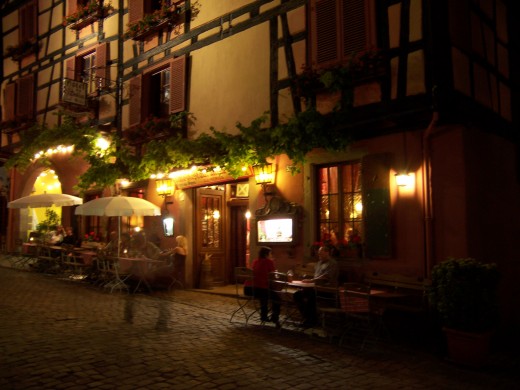
International restaurant culture decoded
Of course North American restaurants also have their perks. One of them is, that your water glass will always be filled up automatically and at no cost, saving you a lot of money. In Europe water is sold by the bottle and quite often costs more than a beer. Of course you can try your luck at ordering tap water but you will probably get dirty looks from the waiter and get charged anyway, that is unless you pretend to be an American tourist. Also in Europe, a cup of coffee easily costs between 4 - 5 bucks and there is no such thing as a free refill. In North America, only the mafia would dare to charge you for eating utensils. In places like Italy, you quite often have to pay a cover charge of approx. 3 - 4 Euros. Strange enough this is for your tablecloth, napkin and dinnerware, but also includes some stale bread sticks. In any case, this extra cost should always be listed in the menu. In most European countries the price you see on the menu is the price that you actually pay. Sales tax is generally included, unless it is specifically mentioned. Also in many countries tipping is not necessary, as the service charge is already included in the price. If in doubt, inquire locally.
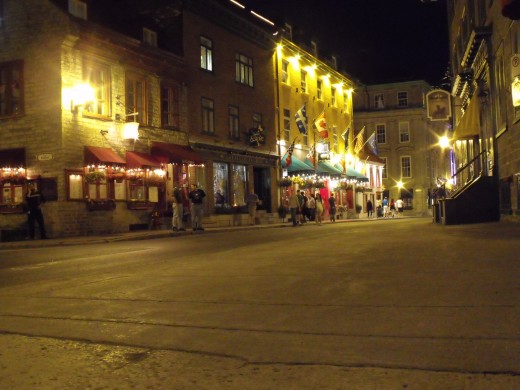
Quebec, the best of both worlds
If you want to experience gourmet slow-food culture without having to fly to Europe, simply go to the Canadian Province of Quebec where they still cook food from scratch. The main gourmet capitals are Montreal and Quebec City. For the truly European experience, go to Quebec City's Old Town, which is a UNESCO World Heritage Site and the only city in North America outside Mexico with its original city walls. Order a “table d’hôte” (3 to 4 course meal) along with a good bottle of wine and relax. Since French is the official language of Quebec you will even forget that you are not in France. And as this place is in North America you will even get plenty of iced water and bottomless coffee. If you are worried that all this food will make you fat, relax and look around you. The obesity rate in Quebec is low compared to the rest of North America. Why, because people eat their food, they don’t guzzle it, and it’s cooked, not fried. Now, isn’t this a perfect world. I bet even Anthony Bourdain would agree. BON APPETIT!







